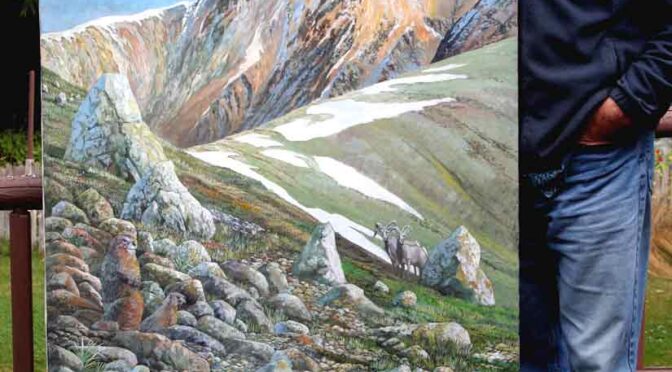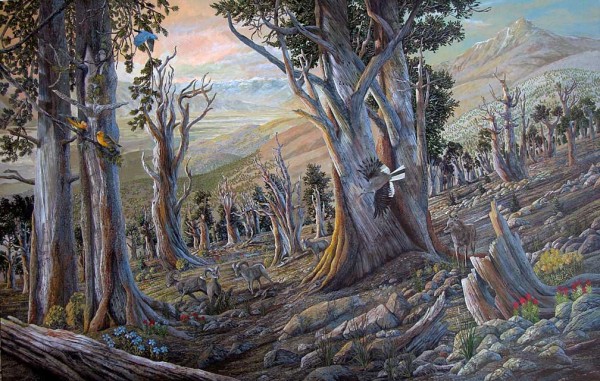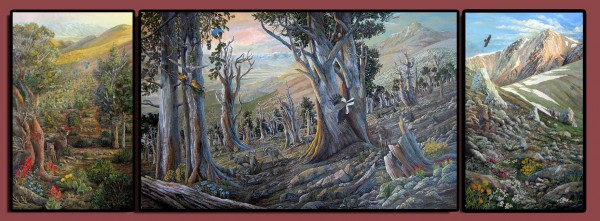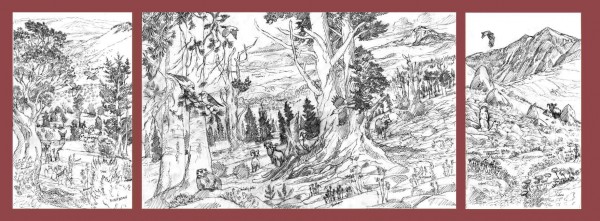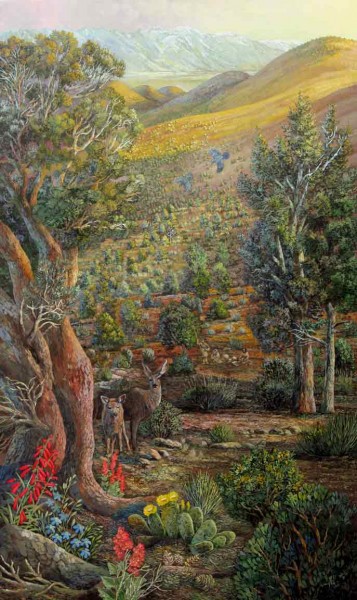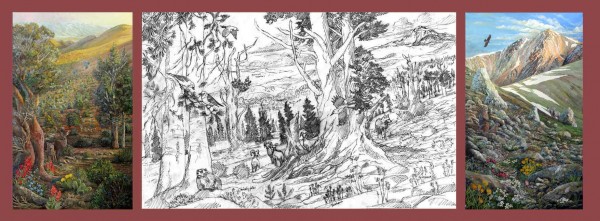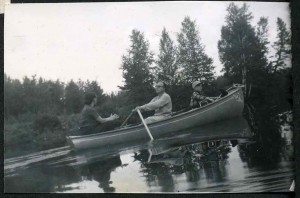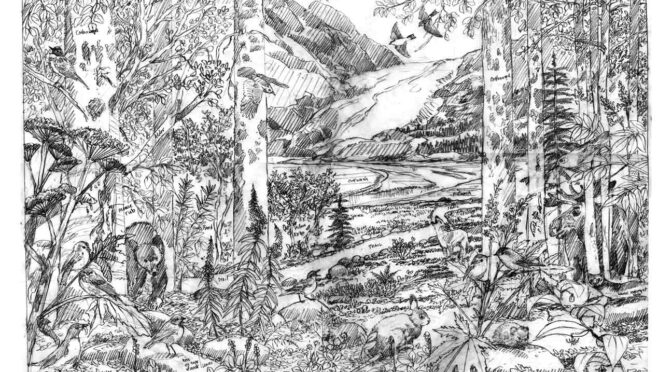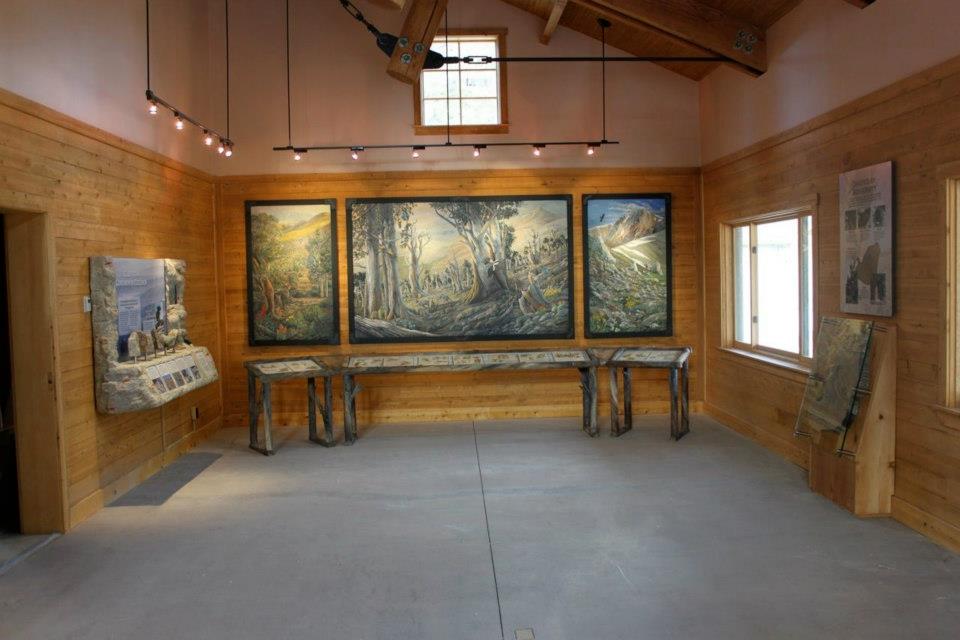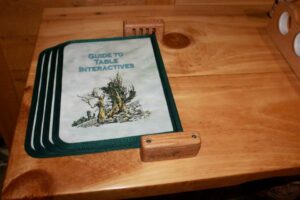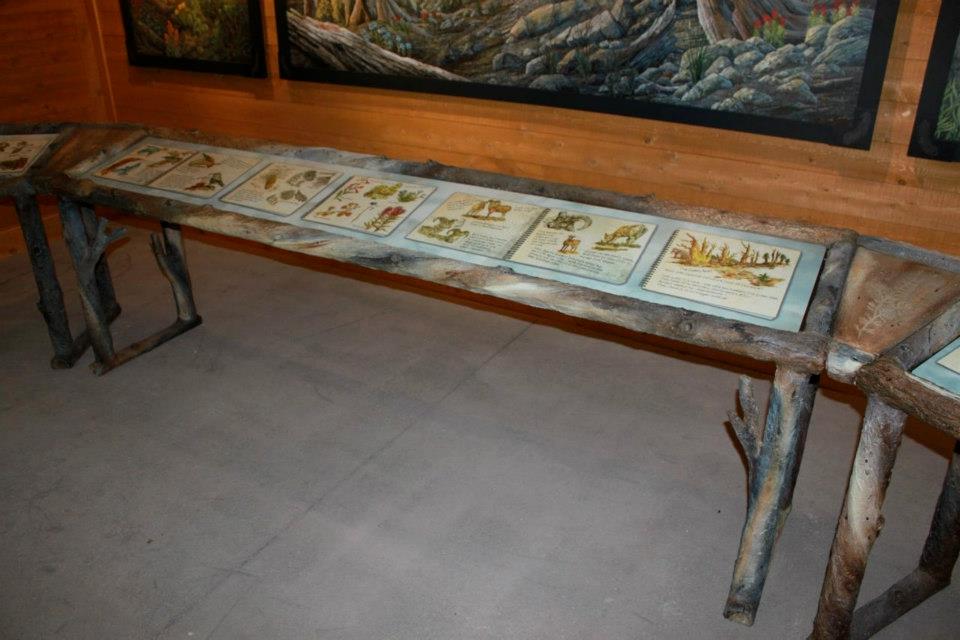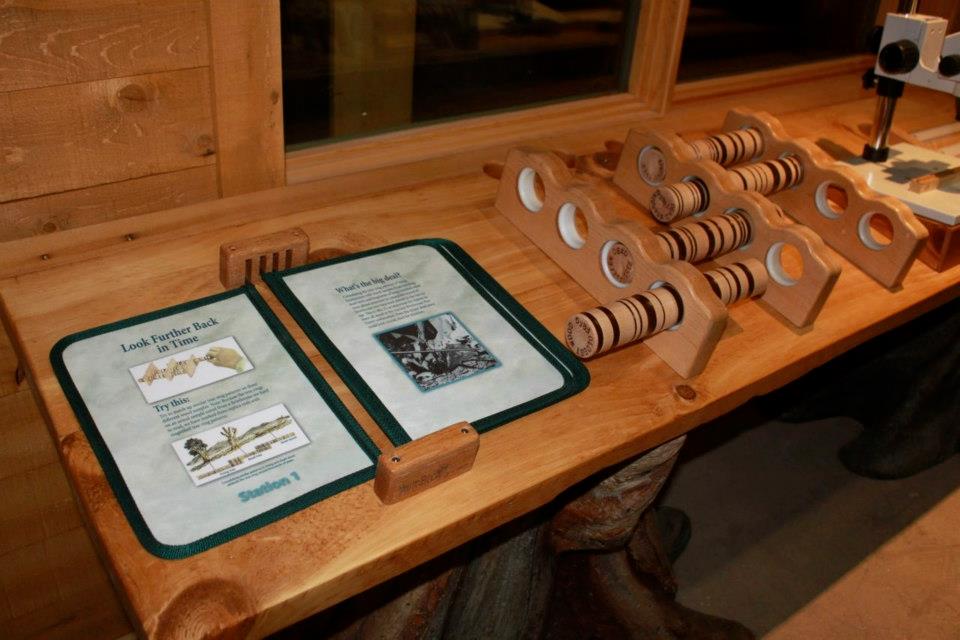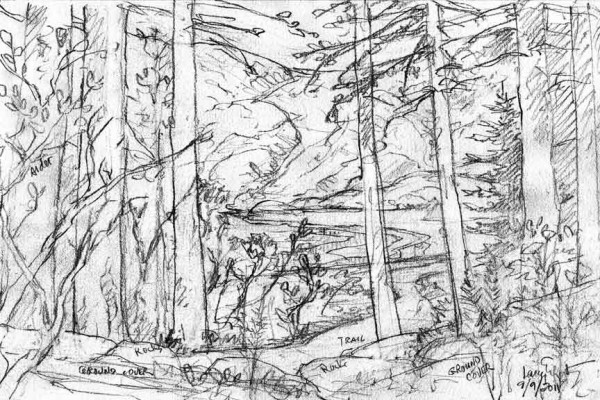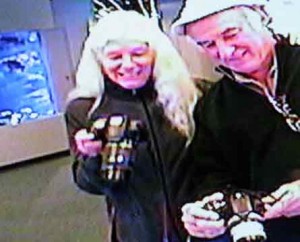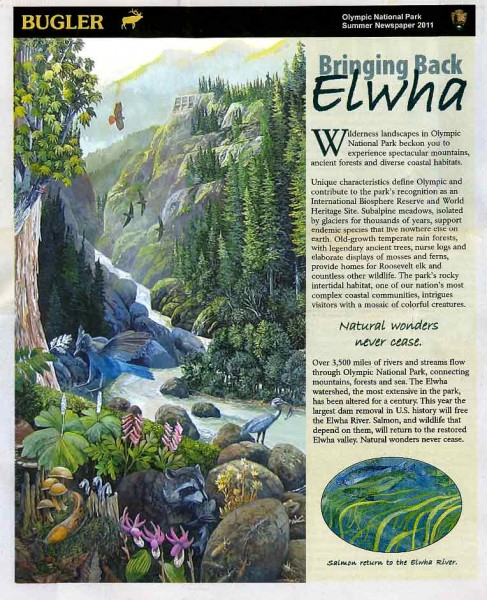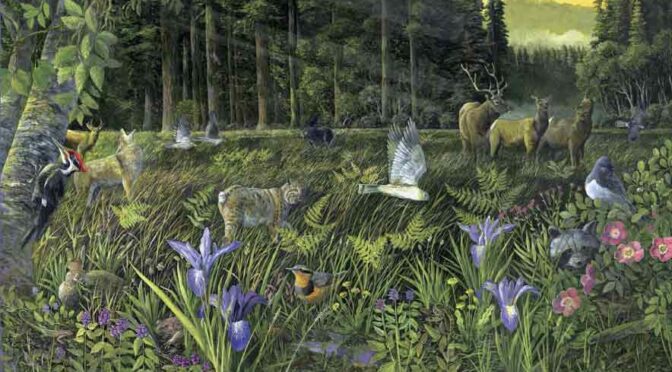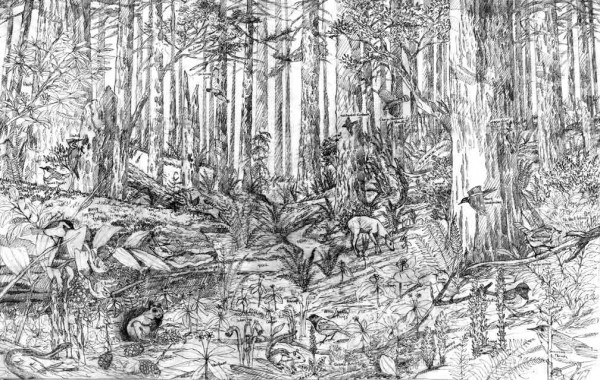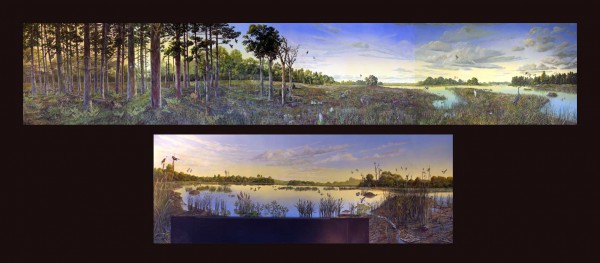(There’s a lot to see here, so these images should enlarge if you click them)
The third and center painting for the Schulman Bristlecone Pine Grove east of Bishop, California was finished this week. Put together, this wall is going to be about 17 running feet of pure high-country paintings. This final one is 5 x 8 feet on stretched canvas and I was really pushing it to fit into my little studio. Several times I almost gave up and went downtown to a larger space, but I wondered how I’d get it in the car. In the end we muddled through and now it’s great to see all three together. Since there was really no room for me to line them up to check (inside, at least), this is the first time I’ve seen them all together. I think it’s going to work.
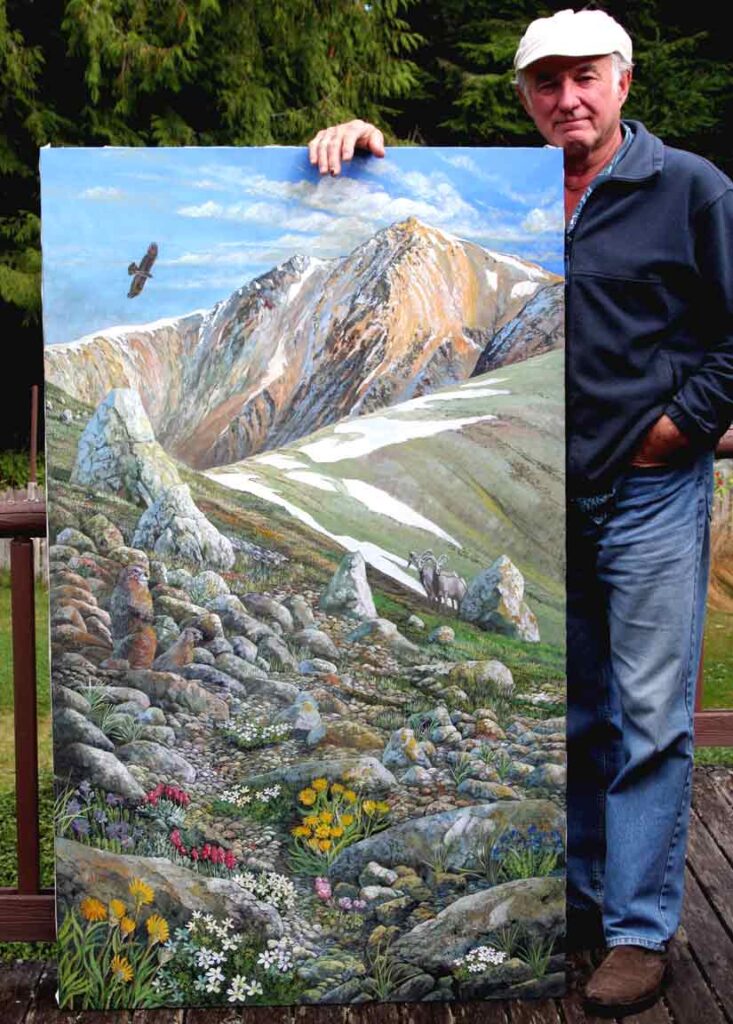
Bristlecone forests are a beautiful but stark and colorless landscape because the trees are all bleached out by thousands of years of sun, the rocks are white dolomite – and flowers are few here at 10,000 feet. And since some of these trees are almost 5,000 years old, the oldest on the planet, they really look gnarled and sculptural, so that’s what I ended up concentrating on. Paintings of sculpture!
For those who want to know more about this project, I’ve blogged about it before here:
Here is the post for the pinyon painting on the left.
Here is the post for the alpine painting on the right.
And here are the original sketches. You’re notice some serious changes between the concepts and final paintings. That’s the fun of it – not to mention I just love this place.
Thanks for reading this week.
Larry Eifert
Click here to go to the online blog this was to.
Click here to go to our main website – packed with jigsaw puzzles, prints, interpretive portfolios and lots of other stuff.
Click here to check out what Nancy’s currently working on with her photography.
